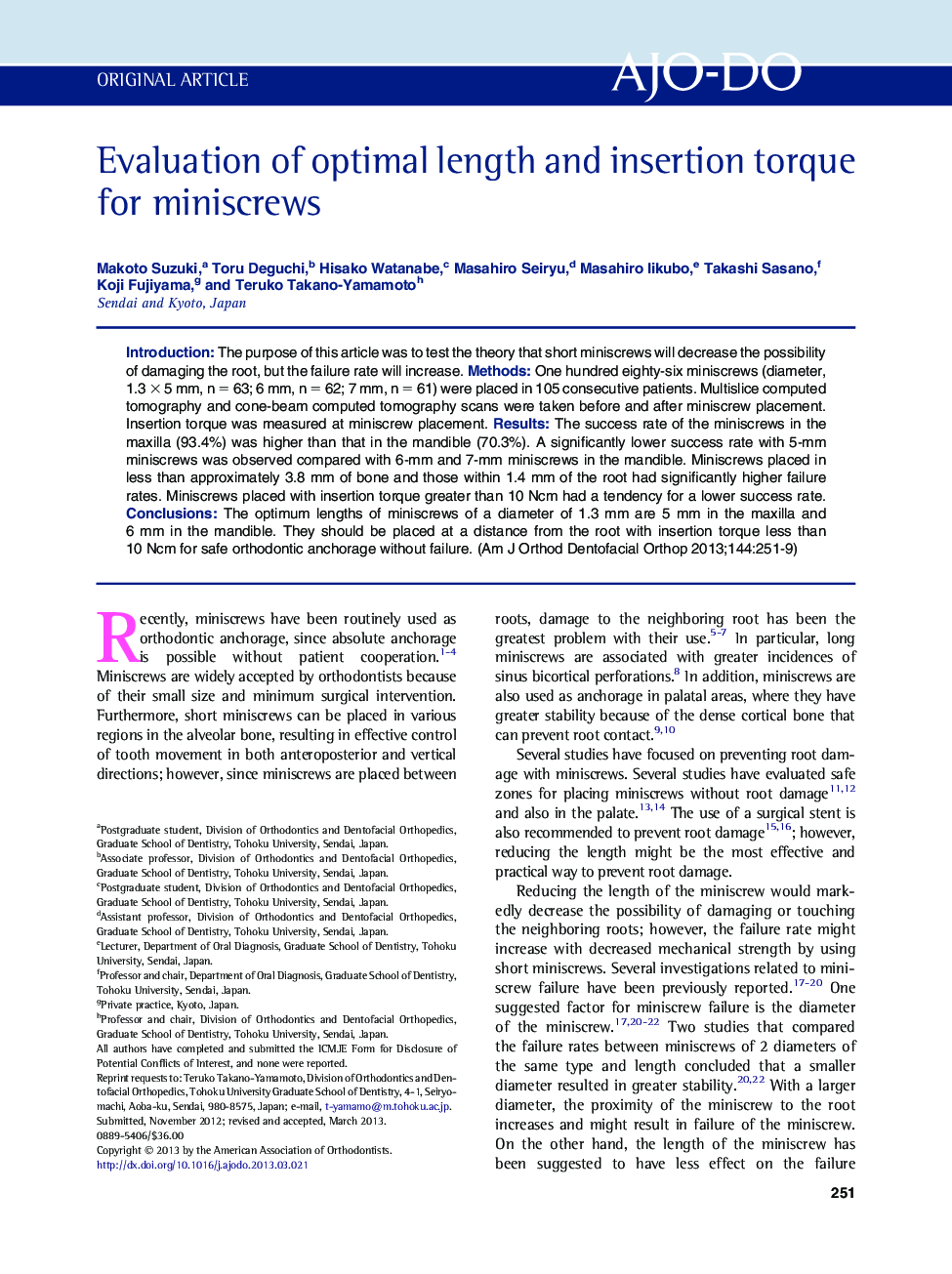| Article ID | Journal | Published Year | Pages | File Type |
|---|---|---|---|---|
| 3116049 | American Journal of Orthodontics and Dentofacial Orthopedics | 2013 | 9 Pages |
IntroductionThe purpose of this article was to test the theory that short miniscrews will decrease the possibility of damaging the root, but the failure rate will increase.MethodsOne hundred eighty-six miniscrews (diameter, 1.3 × 5 mm, n = 63; 6 mm, n = 62; 7 mm, n = 61) were placed in 105 consecutive patients. Multislice computed tomography and cone-beam computed tomography scans were taken before and after miniscrew placement. Insertion torque was measured at miniscrew placement.ResultsThe success rate of the miniscrews in the maxilla (93.4%) was higher than that in the mandible (70.3%). A significantly lower success rate with 5-mm miniscrews was observed compared with 6-mm and 7-mm miniscrews in the mandible. Miniscrews placed in less than approximately 3.8 mm of bone and those within 1.4 mm of the root had significantly higher failure rates. Miniscrews placed with insertion torque greater than 10 Ncm had a tendency for a lower success rate.ConclusionsThe optimum lengths of miniscrews of a diameter of 1.3 mm are 5 mm in the maxilla and 6 mm in the mandible. They should be placed at a distance from the root with insertion torque less than 10 Ncm for safe orthodontic anchorage without failure.
